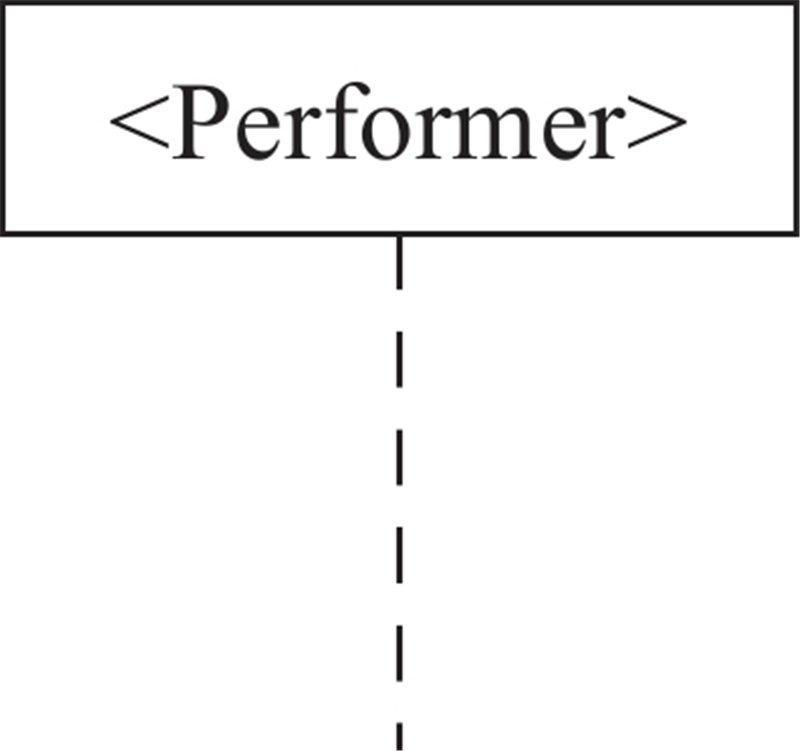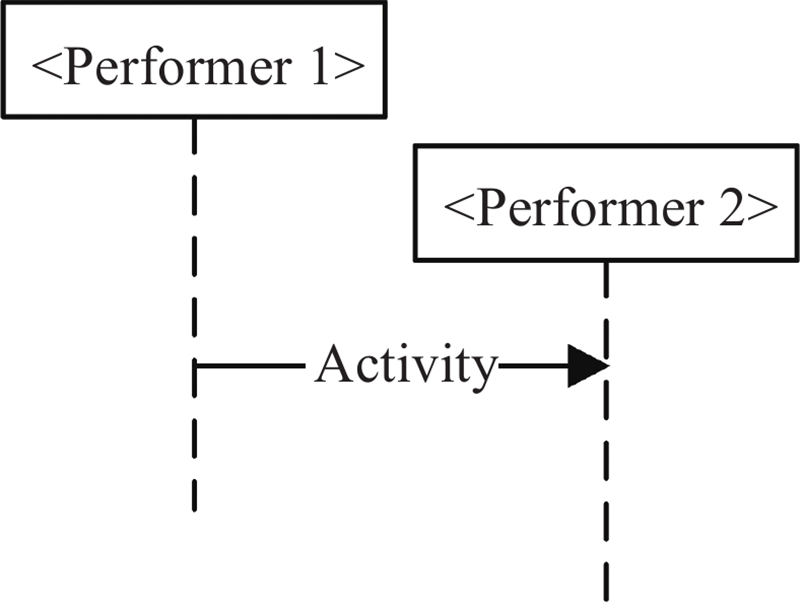

Journal of Systems Engineering and Electronics ›› 2025, Vol. 36 ›› Issue (1): 139-154.doi: 10.23919/JSEE.2024.000034
• SYSTEMS ENGINEERING • Previous Articles
Yue ZHANG( ), Jiang JIANG(
), Jiang JIANG( ), Kewei YANG(
), Kewei YANG( ), Xingliang WANG(
), Xingliang WANG( ), Chi XU(
), Chi XU( ), Minghao LI(
), Minghao LI( )
)
Received:2022-07-04
Online:2025-02-18
Published:2025-03-18
Contact:
Minghao LI
E-mail:2638930341@qq.com;jiangjiangnudt@163.com;kayyang27@nudt.edu.cn;wangxingliangnudt@163.com;xuchi20@nudt.edu.cn;liminghao_nudt@foxmail.com
About author:Supported by:Yue ZHANG, Jiang JIANG, Kewei YANG, Xingliang WANG, Chi XU, Minghao LI. Intelligent modeling method for OV models in DoDAF2.0 based on knowledge graph[J]. Journal of Systems Engineering and Electronics, 2025, 36(1): 139-154.
Add to citation manager EndNote|Reference Manager|ProCite|BibTeX|RefWorks
Table 2
Samples of relationship extraction rules"
| Rule template | Relationship type |
Table 3
Model generation rules for OV-2"
| OV meta model | SysML BDD element | Concrete syntax |
| < Performer > Block The block has the same name as the performer and adjunct properties |  | |
| < Associative Link > The associative link is one-way and has a “resource” property |  |
Table 4
Model generation rules for OV-4"
| OV meta model | SysML BDD element | Concrete syntax |
| < Organization > Block The block has the same name as the organization and adjunct properties |  | |
| < Part Association > |  | |
| < Associative Link > The associative link is two-way |  | |
| < Associative Link > |  |
Table 5
Model generation rules for OV-5a"
| OV meta model | SysML BDD element | Concrete syntax |
| < Activity > Block The block has the same name as the activity and adjunct properties |  | |
| < Performer > Block The block has the same name as the performer and adjunct properties |  | |
| < Part Association > |  | |
| < Dependency Associative > |  |
Table 6
Model generation rules for OV-5b"
| OV meta model | SysML BDD element | Concrete syntax |
| < Activity > Block The block has the same name as the activity and adjunct properties |  | |
| < Associative Link > |  | |
| / | < Initial Node > |  |
| / | < Final Node > |  |
| / | < Fork Node > |  |
| / | < Join Node > |  |
Table 7
Model generation rules for OV-6c"
| OV meta model | SysML BDD element | Concrete syntax |
| < Life Line > The life line has the same name as the performer |  | |
| < Creation Event > < Message > The message has an “activity” property |  |
Table 8
Result of OV named entity recognition"
| Number | OV architecture named entities | Number | OV architecture named entities | Number | OV architecture named entities | ||
| 1 | 10 | 19 | |||||
| 2 | 11 | 20 | |||||
| 3 | 12 | 21 | |||||
| 4 | 13 | 22 | |||||
| 5 | 14 | 23 | |||||
| 6 | 15 | 24 | |||||
| 7 | 16 | 25 | |||||
| 8 | 17 | 26 | |||||
| 9 | 18 |
Table 9
Result of OV relationships extraction"
| Number | OV entity relationship | Number | OV entity relationship | Number | OV entity relationship | Number | OV entity relationship | |||
| 1 | 16 | 31 | 46 | |||||||
| 2 | 17 | 32 | 47 | |||||||
| 3 | 18 | 33 | 48 | |||||||
| 4 | 19 | 34 | 49 | |||||||
| 5 | 20 | 35 | 50 | |||||||
| 6 | 21 | 36 | 51 | |||||||
| 7 | 22 | 37 | 52 | |||||||
| 8 | 23 | 38 | 53 | |||||||
| 9 | 24 | 39 | 54 | |||||||
| 10 | 25 | 40 | 55 | |||||||
| 11 | 26 | 41 | 56 | |||||||
| 12 | 27 | 42 | 57 | |||||||
| 13 | 28 | 43 | 58 | |||||||
| 14 | 29 | 44 | 59 | |||||||
| 15 | 30 | 45 | 60 |
| 1 | HAVVA G G, BEDIR T. Analyzing systems engineering concerns in architecture frameworks—a survey study. Proc. of the IEEE International Systems Engineering Symposium, 2018. DOI: 10.1109/SysEng.2018.8544385. |
| 2 | ZHAO Q S, YANG K W, CHEN Y W, et al. System of systems engineering and system of systems modeling. Beijing: National Defense Industry Press, 2013. (in Chinese) |
| 3 | WAGENHALS L W, SHIN L, KIM D, et al C4ISR architectures: II. a structured analysis approach for architecture design. Systems Engineering, 2000, 3 (4): 248- 287. |
| 4 | NI F, WANG M Z, GUO F B, et al Design of SoS architecture based on object-oriented idea. Systems Engineering and Electronics, 2015, 32 (11): 2367- 2373. |
| 5 | XU H Y, ZHUANG Y, GU J J A formal modeling method for embedded software architecture. Acta Electonica Sinica, 2014, 42 (8): 1515. |
| 6 | CICCHETTI A, CICCOZZI F, PIERANTONIO A Multi-view approaches for software and system modelling: a systematic literature review. Software & Systems Modeling, 2019, 18 (6): 3207- 3233. |
| 7 | The MoDAF Development Team. The ministry of defence architecture framework. https://www.gov.uk/guidance/mod-architecture-framework. |
| 8 | DANDASHI F, HAUSE M C. UAF for system of systems modeling. Proc. of the 10th System of Systems Engineering Conference, 2015: 199−204. |
| 9 | ZHANG M M, CHEN H H, MAO Y, et al An approach to measuring business-IT alignment maturity via DoDAF2.0. Journal of Systems Engineering and Electronics, 2020, 31 (1): 95- 108. |
| 10 |
ZHENG H X, XIN L, WU J H, et al The on-orbit mission analysis of OTV based on DoDAF. Aircraft Engineering and Aerospace Technology, 2021, 93 (6): 937- 945.
doi: 10.1108/AEAT-03-2020-0062 |
| 11 | DoD Architecture Framework Working Group. DoD architecture framework. https://dodcio.defense.gov/Library/DoD-Architecture-Framework/. |
| 12 |
GIACHETTI R E Evaluation of the DoDAF meta-model’s support of systems engineering. Procedia Computer Science, 2015, 61, 254- 260.
doi: 10.1016/j.procs.2015.09.208 |
| 13 | WAN H N, SHU Z, HUANG L, et al Theory of metamodel and its application in the development and design of enterprise architecture. Systems Engineering – Theory & Practice, 2012, 32 (4): 847- 853. |
| 14 | Object Management Group. Unified modeling language (UML) V2.5.1. https://www.omg.org/spec/UML/. |
| 15 | NIKOLAIDOU M, KAPOS G D, TSADIMAS A, et al. Simulating SysML models: overview and challenges. Proc. of the 10th System of Systems Engineering Conference, 2015: 328−333. |
| 16 | International Business Machines Corporation (IBM). Overview of IBM engineering systems design rhapsody. https://www.ibm.com/docs/en/rhapsody/9.0.1?topic=overview. |
| 17 | CHEN X, HUANG L, LUO X S Analysis and research on SA of architecture modeling tool. Electronic Design Engineering, 2011, 19 (13): 19- 22. |
| 18 | Vitech. CORE systems engineering guided tour. https://www.vitechcorp.com/support/documentation/core/900/seguidedtour.pdf. |
| 19 | LIU L, WANG D B A review on named entity recognition. Journal of the China Society for Scientific and Technical Information, 2018, 37 (3): 329- 340. |
| 20 | COLLINS M, SINGER Y. Unsupervised models for named entity classification. Proc. of the Joint SIGDAT Conference on Empirical Methods in Natural Language Processing and Very Large Corpora, 1999: 100−110. |
| 21 | BIKEL D M An algorithm that learns what’s in a name. Machine Learning, 1999, 34 (1/3): 211- 231. |
| 22 |
SHUAI Y, SONG T L, WANG J P Integrated parallel forecasting model based on modified fuzzy time series and SVM. Journal of Systems Engineering and Electronics, 2017, 28 (4): 766- 775.
doi: 10.21629/JSEE.2017.04.16 |
| 23 | MCCALLUM A, LI W. Early results for named entity recognition with conditional random fields, feature induction and web-enhanced lexicons. Proc. of the 7th Conference on Natural Language Learning, 2003: 188−191. |
| 24 | ZHANG X Y, LIU Y, SONG J N Short-term orbit prediction based on LSTM neural network. Systems Engineering and Electronics, 2022, 44 (3): 939- 947. |
| 25 | HUANG Z H, XU W, YU K. Bidirectional LSTM-CRF models for sequence tagging. https://arxiv.org/abs/1508.01991. |
| 26 | AITKEN J S. Learning information extraction rules: an inductive logic programming approach. Proc. of the European Conference on Artificial Intelligence, 2002: 355−359. |
| 27 | XIE D P, CHANG Q Review of relation extraction. Application Research of Computers, 2020, 37 (7): 1921- 1924. |
| 28 | LI D M, ZHANG Y, LI D Y, et al Review of entity relation extraction methods. Journal of Computer Research and Development, 2020, 57 (7): 1424- 1448. |
| 29 | GE B F, REN C S, ZHAO Q S, et al Executable architecture modeling and analysis for system-of-systems. Systems Engineering —Theory & Practice, 2011, 31 (11): 2191- 2201. |
| 30 | FU J, LUO A M, LUO X S, et al Approach for generating Petri net executable model based on physical exchange specification of architecture. Systems Engineering and Electronics, 2017, 39 (5): 1030- 1035. |
| 31 | ZHANG X X, LUO A M, HUANG L, et al Method of creating architecture executable model based on DM2. Journal of National University of Defense Technology, 2013, 40 (2): 27- 33. |
| 32 | SONG S N, GUO X Y, XU F C, et al. Research on modeling of USV swarm target defense mission system from DoDAF operational viewpoint. Proc. of the IEEE International Conference on Unmanned Systems, 2021: 214−218. |
| [1] | Hongyue HE, Weixing ZHU, Ruiyang LI, Qiaoyu DENG. An executable modeling and analyzing approach to C4ISR architecture [J]. Journal of Systems Engineering and Electronics, 2020, 31(1): 109-117. |
| Viewed | ||||||
|
Full text |
|
|||||
|
Abstract |
|
|||||